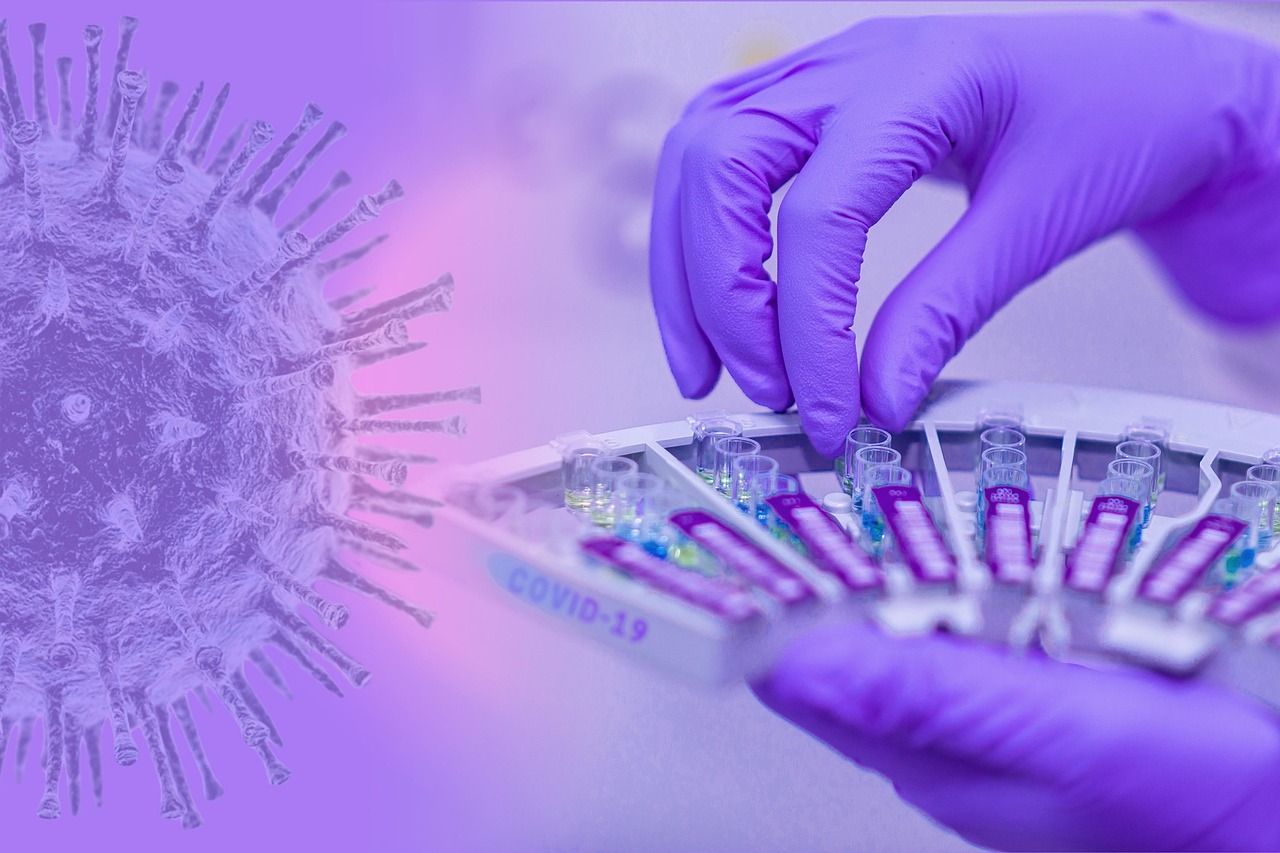Analysis by Dr. Josef Mercola
History at a Glance
- Recent data shows that autism rates increased by 26% from 2018 to 2020, with one in 30 children aged 3 to 17 diagnosed, with prevalence higher among black, Hispanic, and Asian children.
- The economic burden of autism is enormous: the social cost per person is $3.6 million, and the total cost in the U.S. is expected to reach $5.54 trillion or more by 2060.
- Research links high levels of linoleic acid metabolites in cord blood to increased autism severity, raising concerns about processed foods and seed oils in the modern diet
- Studies show that the composition of the gut microbiome in infants, particularly a decline in beneficial bacteria such as Akkermansia and Coprococcus, correlates with later development of autism.
- EMF exposure from devices may contribute to autism by disrupting voltage-gated calcium channels in the brain; practical measures can help reduce exposure
- Autism spectrum disorders (ASDs) have been on the rise in children in recent years, including those as young as four years old. According to the Autism and Developmental Disabilities Monitoring (ADDM) Network, the overall prevalence of ASD in 2020 was 21.5 per 1,000 children aged 4. This represents a 26% increase from 2018, when the prevalence was 17 per 1,000.
The numbers are not consistent across regions, with California having the highest rate at 46.4 per 1,000 and Utah having the lowest rate at 12.7 per 1,000. There are also significant gender and racial disparities in ASD diagnoses.
Boys are more likely to be diagnosed with autism than girls, with a prevalence of 32.3 per 1,000 compared to 10.4 per 1,000 for girls, whose ASD symptoms often differ from those of their male peers. Overall, however, one in 30 children aged 3 to 17 was diagnosed with autism in 2020 – that’s about 33 in 1,000 people.
Demographic Changes: Autism More Common in Certain Groups
Current data show a significant shift in autism prevalence across ethnic and racial groups. For the first time, the ADDM Network reported that white children had a lower rate of autism at age 8 than their black, Hispanic, and Asian/Pacific Islander peers.
Specifically, the prevalence was 24.3 per 1,000 for white children, 29.3 for black children, 31.6 for Hispanic children, and 33.4 for Asian/Pacific Islander children.
Another interesting aspect of the latest autism statistics is the nuanced relationship between socioeconomic status (SES) and autism prevalence. Unlike previous years, where higher SES was strongly associated with increased autism diagnoses, the 2020 data shows a more complex picture.
In three of the ADDM Network’s 11 locations—Arizona, New Jersey, and Utah—children from low-income households had a higher prevalence of autism. When data from all locations were combined, there was a clear trend toward lower prevalence of autism in census tracts with higher socioeconomic status. However, the differences between low, middle, and high socioeconomic status groups were relatively small, ranging from 23 to 27.2 per 1,000 children.
It is important to know when children are diagnosed with autism to ensure they receive early treatment. The 2020 ADDM Network data provides valuable insight into the age at which children receive their first autism diagnosis. The average age of the earliest known autism diagnosis was 49 months, although there was considerable variation across states—from as early as 36 months in California to 59 months in Minnesota.
Additionally, children diagnosed with ASD who also have intellectual disabilities tend to receive their diagnosis earlier, with an average age of 43 months compared to 53 months for children without intellectual disabilities.
The Economic Burden of Autism
It is estimated that each person with autism has a lifetime societal cost of approximately $3.6 million. Looking at the entire population of individuals diagnosed with autism from 1990 to 2019, the total societal cost in the U.S. is over $7 trillion. This figure represents approximately two years of total federal revenue, underscoring the immense economic impact of autism.
Another model takes into account the actual increase in autism diagnoses over time and produces another staggering figure. It looks at different age groups, inflation, and future projections of autism rates to predict the cost. According to this model, the annual cost of autism in the United States was approximately $223 billion in 2020.
These costs are expected to increase to approximately $589 billion by 2030, $1.36 trillion by 2040, and $4.29 to $6.78 trillion by 2060—an estimated $5.54 trillion.
In the future, the financial burden of autism could escalate even more dramatically. If autism prevalence remains constant over the next decade, the societal cost in the U.S. is expected to rise to $11.5 trillion by 2029, according to a study published in Research in Autism Spectrum Disorders.
However, if the current trend of increasing prevalence continues, these costs could rise to nearly $15 trillion over the same period. This projection presents an unprecedented economic challenge in addition to the public health impact.
Unraveling the Biology of Autism
Complex biological mechanisms contribute to autism. For example, a study published in Psychiatry and Clinical Neurosciences examined the role of lipid metabolism, focusing on dihydroxy fatty acids derived from arachidonic acid (diHETrE) in the cord blood of newborns. diHETrE is a metabolite of arachidonic acid (derived from linoleic acid (LA)).
The study found that higher levels of certain diHETrE metabolites were significantly associated with increased severity of autism symptoms and impaired social adaptation at age 6 years.
These results suggest that metabolic processes involving polyunsaturated fatty acids (PUFAs) during the fetal period play a role in the developmental trajectory of children with autism. In short, PUFAs such as linoleic acid are precursors to pro-inflammatory metabolites such as diHETrE, which are associated with increased severity of autism symptoms in the Psychiatry and Clinical Neurosciences study.
Linoleic acid is abundant in the modern diet, particularly in processed foods, restaurants, and fast food products, resulting in higher consumption compared to historical norms. Metabolism of linoleic acid via the cytochrome P450 (CYP) pathway produces diHETrE metabolites, raising concerns about the widespread availability and consumption of linoleic acid in the modern diet.
Reevaluating the sources of fat in your diet and choosing healthier alternatives, such as saturated fats, is an important decision to make to protect brain health, including during pregnancy. Reducing linoleic acid consumption may not only help reduce inflammatory markers associated with autism, but also support overall brain health and development.
Your Child’s Gut Microbiome and Autism Risk
The foundation for your child’s neurological development could be laid as early as the first year of life. Recent research that followed 16,440 Swedish children over two decades revealed a significant link between infants’ gut microbiome and the later development of autism.
The study found that certain beneficial bacteria, such as Akkermansia muciniphila and Coprococcus, were significantly less common in infants who were later diagnosed with autism. These bacteria play a role in maintaining the integrity of the gut barrier and regulating the immune system, which are essential for healthy brain development.
The first years of a child’s life are a crucial time for gut health, and frequent childhood infections and antibiotic treatment can have long-term effects on the microbiome and neurological development. The study found that frequent infections, especially ear infections (otitis), and repeated antibiotic use in infancy are strongly associated with a higher likelihood of developing autism and other neurodevelopmental disorders.
Antibiotics disrupt the delicate balance of gut bacteria, reducing beneficial microbes like Coprococcus and increasing harmful ones like Citrobacter. This imbalance, or dysbiosis, leads to immune dysregulation and inflammation, which is linked to impaired brain development and function.
In addition to the microbial landscape, the study revealed significant metabolic differences in infants who later developed autism. Higher levels of environmental toxins such as perfluorodecanoic acid (PFDA), a “forever chemical” in cord blood, were strongly associated with autism risk. PFDA disrupts immune responses and promotes chronic inflammation, which further affects brain health.
Additionally, metabolomic profiling of stool samples revealed disruptions in amino acids and vitamins critical for neurotransmitter synthesis and antioxidant protection. It is rarely the only factor that triggers a neurodevelopmental disorder or other chronic disease. Typically, it’s a combination of factors—such as processed foods loaded with LA, childhood vaccinations, overuse of antibiotics, and environmental pollutants—that lead to gut dysfunction and other imbalances in the body.
Understanding EMFs and Their Effects on Brain Health
Electromagnetic fields (EMFs) have been compared to modern cigarettes in that most people are exposed to them 24 hours a day. Major sources of this ubiquitous radiation include cell phones, cell towers, computers, smart meters, and Wi-Fi devices, among others.
Exposure to EMFs is associated with significant mitochondrial dysfunction caused by free radical damage. Chronic exposure to EMFs has been linked to serious brain disorders such as Alzheimer’s disease, anxiety, depression, and autism.
A study published in Pathophysiology suggests that autism may be linked to biological disorders similar to those caused by EMFs and radiofrequency radiation. In addition, Dr. Martin Pall has discovered a new mechanism by which microwaves emitted from cell phones and other wireless technologies cause damage. This damage occurs through voltage-gated calcium channels (VGCCs) located in your cell membranes.
VGCCs are highly concentrated in the brain, and animal studies have shown that even small amounts of microwave EMFs have significant and diverse effects on brain function. When EMFs activate these VGCCs, they lead to a variety of neuropsychiatric problems.
To date, at least 26 studies have linked EMFs to neuropsychiatric effects, and five specific criteria have been established to confirm a causal relationship, suggesting that EMFs can indeed cause these adverse effects.
In another study published in Brain Sciences, Pall highlights how VGCCs lead to excessive levels of intracellular calcium in your body’s cells. This calcium overload disrupts processes associated with brain development, particularly during the perinatal period, when synaptogenesis—the formation of synapses—is at its peak.
Synaptogenesis is essential for the formation of complex networks that underlie social interactions, communication, and behavior. When EMFs disrupt this process by overactivating VGCCs, it leads to the synaptic dysfunction seen in autism spectrum disorders.
Compelling Evidence – How EMFs Contribute to Autism
The evidence linking EMF exposure to autism is extensive and compelling. Genetic studies have shown that mutations that increase VGCC activity are directly linked to higher rates of autism, highlighting the importance of calcium regulation in the development of autism.
Animal studies further support this link, as prenatal EMF exposure in rodents has led to autism-like behaviors and significant changes in brain structure and function. For example, rats exposed to EMFs have shown impaired social interactions and increased oxidative stress, which mirror biochemical and behavioral characteristics observed in human autistic patients.
In addition, epidemiological research has shown, albeit limited, associations between high-EMF environments—such as areas near military radar sites or areas where pregnant women have been exposed to elevated EMFs—and observed increases in autism. Taken together, these findings suggest that EMFs are not just a random factor, but a driver of the autism epidemic.
While it is nearly impossible to completely avoid EMF exposure, there are practical ways to minimize it. Given the constant exposure to EMF in everyday life, it is essential for your health to learn about its negative effects. This is especially important if you are dealing with a serious illness or neurodevelopmental disorder such as autism. Taking steps to reduce your EMF exposure will have a significant positive impact on your well-being.
An effective strategy is to connect your desktop computer to the Internet using a wired connection and activate Airplane Mode on both your desktop and mobile phones. Also avoid wireless peripherals such as keyboards, trackballs, mice, game consoles, printers, and landlines. Use wired counterparts instead.
If you must use WiFi, be sure to turn it off when not in use, especially at night when you are sleeping. Turning off the power in your bedroom at night can also reduce your overall EMF exposure.
Taking Action for a Healthier Future
The rising prevalence of autism, along with the significant economic and emotional burden that comes with it, underscores the urgency of addressing the causes of this condition. Prioritizing gut health through a balanced diet rich in beneficial bacteria and minimizing exposure to harmful substances such as EMFs and excessive amounts of linoleic acid are essential first steps.
In addition, understanding the profound impact of environmental factors and genetic predispositions will allow you to create safer and more supportive environments. Simple changes, such as choosing wired connections over wireless devices and choosing healthier sources of fat, can significantly reduce the risk of developing neurodevelopmental disorders.
In addition, promoting a cleaner environment and supporting policies that limit harmful exposures contribute to broader societal changes that benefit all children. Remember, early intervention and informed decisions are your best tools in the fight against the rising number of autism cases. By staying informed, making conscious lifestyle adjustments, and creating a supportive environment, you will help ensure a healthier and better future for children.
Sources:
- 1 Surveillance Summaries, March 24, 2023, 72(1);1–15
- 2 Children’s Health Defense, The Defender, July 14, 2022
- 3, 4 Surveillance Summaries, March 24, 2023, 72(2);1–14
- 5, 8 Research in Autism Spectrum Disorders April 2020, Volume 72, 101502
- 6 Science, Public Health Policy and the Law December 2023, Volume 4: 227-256 (Archived)
- 7 Children’s Health Defense, The Defender, January 5, 2024
- 9, 10 Psychiatry and Clinical Neurosciences, Volume 78, Issue 9, September 2024, Pages 546-557
- 11, 12 Cell April 11, 2024, Volume 187, Issue 8, P1853-1873.E15
- 13 J Chem Neuroanat. 2016 Sep;75(Pt B):43-51
- 14 Pathophysiology, June 2013, Volume 20, Issue 3, Pages 191-209
- 15 Rev Environ Health. 2015;30(2):99-116
- 16 Journal of Chemical Neuroanatomy September 2016, Volume 75, Part B, Pages 43-51
- 17, 18, 19, 20 Brain Sci. 2024 Apr 30;14(5):454
Source: https://articles.mercola.com/sites/articles/archive/2024/12/19/autism-statistics.aspx




